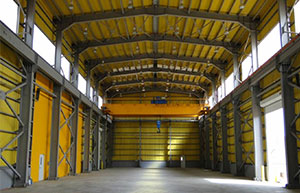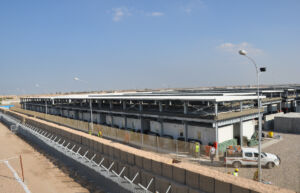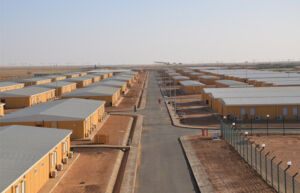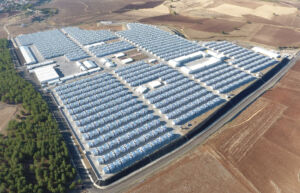Prefabricated Buildings: Modern, Efficient, and Scalable Construction Solutions

As industries and communities demand faster, more cost-effective, and sustainable building methods, traditional construction often struggles to keep pace. Rising labor costs, tight project schedules, and the need for adaptable solutions have driven the growth of modular and prefabricated systems. Prefabricated buildings address these challenges by delivering durable, customizable, and rapidly deployable structures suitable for a wide range of applications. Dorce Prefabricated and Construction is a global leader in providing prefabricated buildings, combining engineering expertise, large-scale production capacity, and turnkey solutions for international projects.
What are Prefabricated Buildings?
Prefabricated buildings are structures manufactured in factory-controlled environments and transported to project sites for assembly. Built with high-quality steel or light-gauge steel frames, insulated panels, and pre-installed systems, these buildings minimize on-site work while ensuring consistent quality. Prefabricated buildings can serve as offices, schools, healthcare centers, housing units, industrial facilities, or large-scale infrastructure hubs. Their modular design allows for quick installation, flexibility, and scalability, making them a practical alternative to traditional construction.
Advantages of Prefabricated Buildings
Prefabricated buildings offer significant benefits across industries:
-
Fast construction: Factory production and modular assembly dramatically reduce project timelines.
-
Cost-efficiency: Lower labor requirements and shorter construction schedules minimize expenses.
-
Quality assurance: Controlled production environments ensure consistent standards and durability.
-
Flexibility: Designs can be tailored for offices, schools, healthcare, accommodation, or storage.
-
Durability: Engineered to withstand extreme weather and heavy use.
-
Scalability: Easily expanded or reconfigured as project needs evolve.
-
Sustainability: Prefabricated methods reduce material waste and carbon footprint.
-
Mobility: Structures can be relocated and reused across multiple sites.
Applications of Prefabricated Buildings
Prefabricated buildings are versatile and used across diverse sectors worldwide:
-
Construction and infrastructure projects: Site offices, workforce camps, and support facilities.
-
Education: Modular classrooms, dormitories, and training centers.
-
Healthcare: Prefabricated clinics, hospitals, and laboratories.
-
Defense and security: Modular bases, accommodation, and command centers.
-
Energy and mining: Worker camps, offices, and utility buildings in remote locations.
-
Humanitarian aid: Emergency shelters, schools, and healthcare units in disaster zones.
-
Commercial use: Retail shops, showrooms, and modular offices.
-
Tourism and hospitality: Lodges, hotels, and service facilities.
Dorce’s Difference
Dorce Prefabricated and Construction combines decades of global experience with advanced production capacity to deliver prefabricated buildings that meet international standards. Manufactured with pre-installed plumbing, electrical systems, HVAC, and finishes, each unit is delivered ready for rapid deployment, reducing on-site risks and delays.
Dorce’s proven expertise includes delivering large-scale turnkey prefabricated building projects for governments, NGOs, and multinational corporations. From modular schools in Africa to workforce camps in the Middle East and healthcare centers in Central Asia, Dorce provides reliable, cost-effective, and sustainable prefabricated solutions tailored to project requirements.
Prefabricated buildings are more than just temporary structures—they are modern, efficient, and scalable solutions that support the growth of industries, communities, and global infrastructure. By merging modular innovation with engineering excellence, Dorce Prefabricated and Construction continues to deliver projects that redefine the future of construction.



